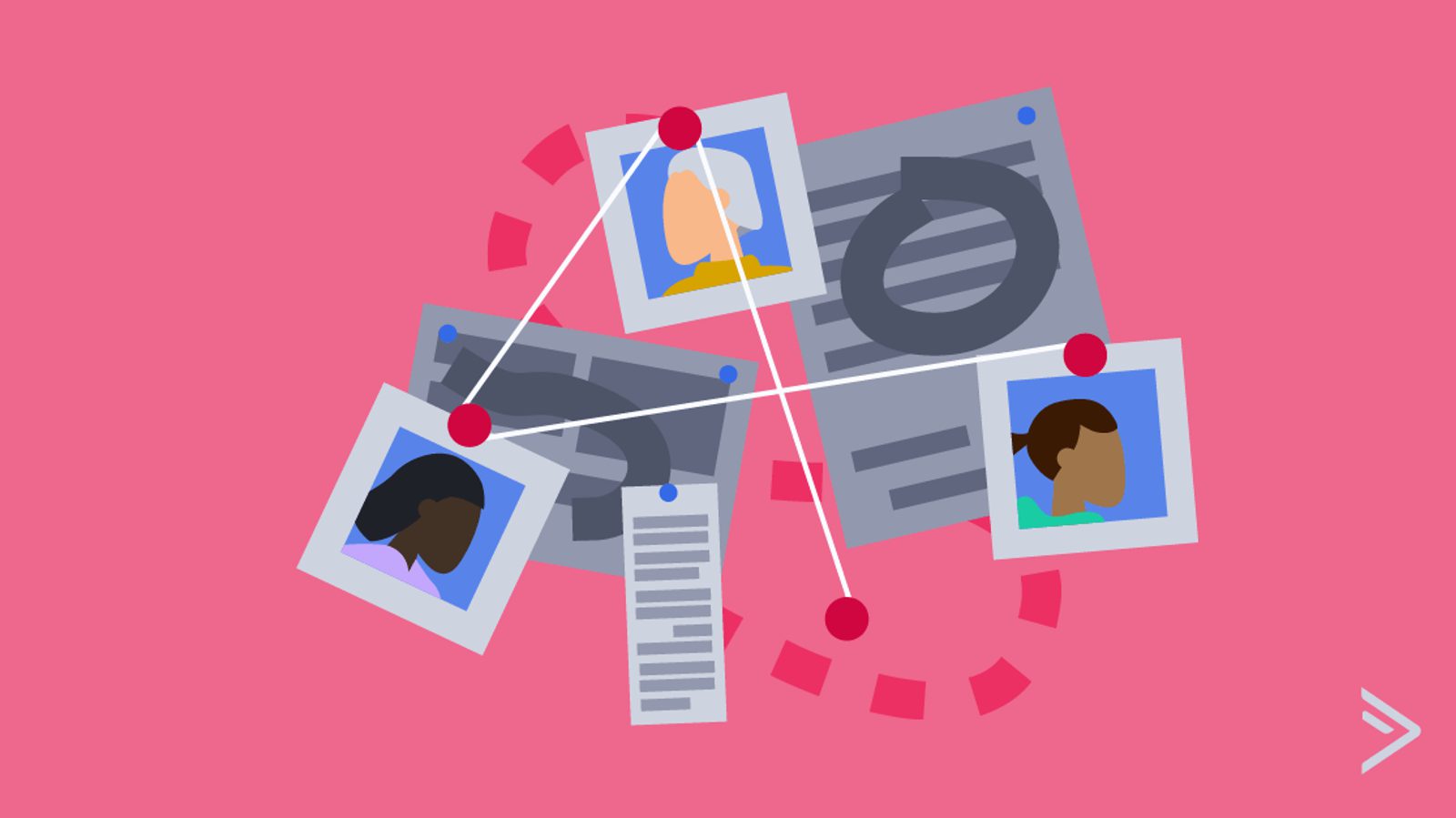You want to create a CRM strategy, but… where do you even start?
You should start by taking a step back.
Start by asking yourself, what does CRM stand for?
Customer
Relationship
Management
The real CRM—customer relationship management—means creating the best possible experience for your customers at every step of the customer lifecycle. Notice that the words “software” and “platform” are nowhere to be found. That’s because CRM software is just a part of the customer relationship bubble. It should be a tool for creating great customer experiences and relationships.
If you’re a customer-first business, the customer experience is your CRM strategy:
- 86% of customers said they would pay more to a company that provides personalized customer service.
- 84% of customers say their experience with a company is just as important as its product or service.
- 61% of customers would abandon a company after just 1 bad experience.
- 56% of businesses have set better customer experiences as their top business priority.
To put customer experience at the core of your CRM strategy, you must reframe how you think about CRM. You need to think bigger—beyond your marketing and sales tech stacks. Beyond software. Beyond the sales process.
Your CRM strategy needs to cover every touchpoint, from the first time a potential customer sees your company name through the entire customer lifecycle.
What is CRM strategy?
We know that CRM stands for Customer Relationship Management. Therefore, CRM strategy is your strategy to improve long-term relationships with your customer base. A great CRM strategy increases revenue per customer, reduces customer acquisition costs, and improves customer satisfaction.
Even though we often use “CRM” to refer to CRM platforms and software, the CRM technology you use is just a part of how your company handles customer relationships. Whatever tools and tech you’re using, CRM strategy begins with the customer and exists to optimize your entire relationships with customers. In fact, CRM strategy will often incorporate other tech beyond CRM software (more to come on that).
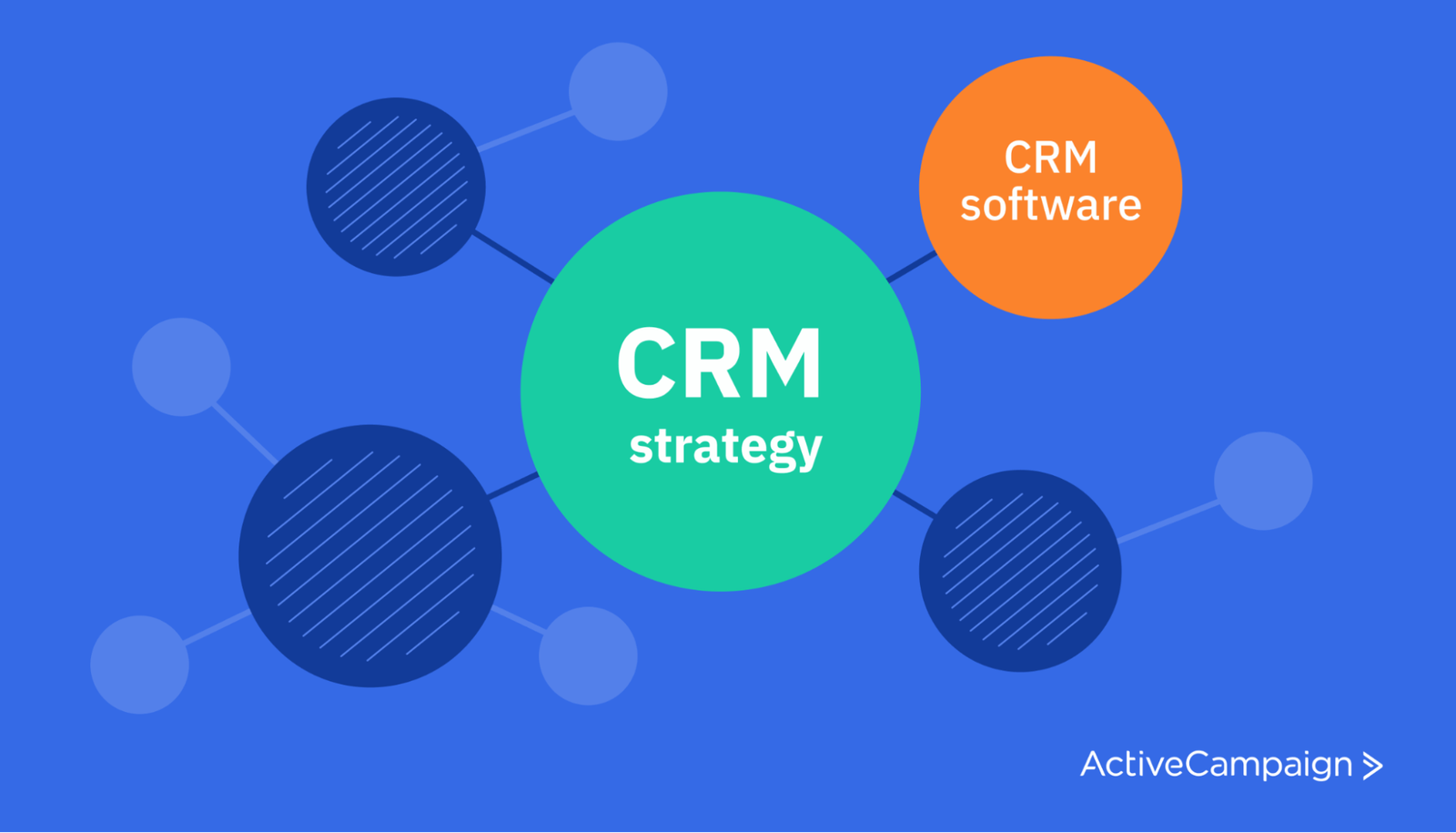
To formulate a CRM strategy, you have to think about how each of your processes and business functions will impact the customer.
4 steps to create a CRM strategy
By now, you know that your CRM strategy is integral to your business’s success. The good news is that you can break the process of formulating that strategy into smaller steps. Here are 4 steps to create a customer-focused CRM strategy:
- Identify your “who” and your “why.”
- Mind the (customer experience) gap.
- Analyze and optimize the customer journey.
- Prioritize and implement changes.
Step 1: Identify your “who” and your “why”
So far, we’ve talked about strategy, technology, and business processes. But we should never forget that all of these circle back to people—your stakeholders. You have to understand who is impacted by (and also impacts) your CRM strategy.
The most important key stakeholder in your CRM strategy is the customer. The next most important stakeholder is the customer-facing employee, managers, and executives.
Most organizations get this backward. They focus on what managers and executives want to see and create a strategy around gathering and presenting that data. The problem with this approach lies in how it affects customer-facing employees.
A CRM strategy that revolves around improving arbitrary KPIs is usually too software-centric and turns the CRM software into a symbol of micromanagement. Employees rebel and abandon the tool, and the customer experience suffers. When the customer experience suffers, you lose.
This is why understanding who is at the core of your CRM strategy ultimately leads to the “why” of your entire business. For a customer experience-focused business, your customers are the “why.”
“Very few people or companies can clearly articulate WHY they do WHAT they do. By WHY, I mean your purpose, cause, or belief—WHY does your company exist? WHY do you get out of bed every morning? And WHY should anyone care?” -Simon Sinek

When you start with “why,” your message will:
- Be clear
- Resonate with your audience
- Inspire action
- Be consistent
Leading with “why” gets everyone focused on reaching the same goals. Your CRM strategy impacts sales, marketing, and customer service teams—not to mention management across the organization. When everyone focuses on the why of your CRM strategy—the customer experience—you can set realistic, customer-centric goals.
This is why you need buy-in from all stakeholders.
If you don’t get everyone on the same page, you might end up with:
- Marketing passing unqualified leads to your sales team
- Leads slipping through the cracks
- Teams whose goals contradict 1 another
- Doubling work or inefficient work
But getting everyone on the same page isn’t enough—people need to be committed to their shared goals. In Robert Cialdini’s iconic book Influence, he names “commitment and consistency” as 1 of the 6 most effective ways to influence people. When people commit, they’re more likely to honor that commitment and buy into the whole idea.
Cialdini explains that commitment reinforces consistency. Once your internal stakeholders commit to a customer-centric CRM strategy, they’ll behave in ways that are “stubbornly consistent” with that stance.
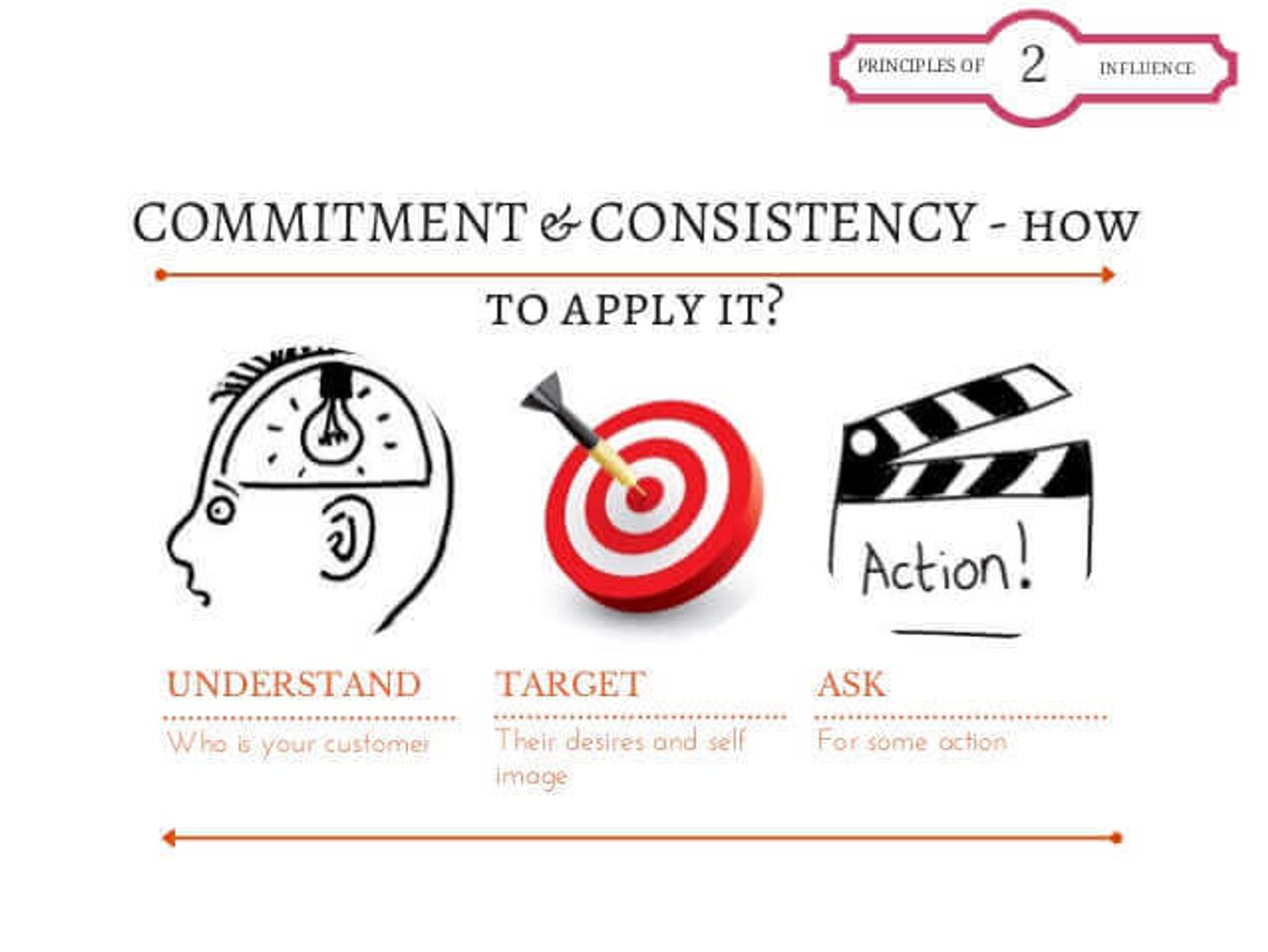
With your team aligned on why you need a CRM strategy, it’s time to look at how you can work toward a better customer experience.
Step 2: Mind the (customer experience) gap
“For want of a nail the shoe was lost.
For want of a shoe the horse was lost.
For want of a horse the rider was lost.
For want of a rider the battle was lost.
For want of a battle the kingdom was lost.
And all for the want of a horseshoe nail.”
-13th Century English Proverb
What does this have to do with CRM strategy?
People often attribute problems to the action directly before the problem (the proximate cause), But what if the root cause is different?
English philosopher Thomas Hobbes explains this in his classic 1651 work, Leviathan. Hobbes writes:
“Ignorance of remote causes disposeth men to attribute all events to the causes immediate and instrumental: for these are all the causes they perceive.”
In modern English: People tend to attribute events to the immediate causes—even though they should find the root cause instead.
Sakichi Toyoda, Japanese industrialist, inventor, and founder of Toyota, developed the “5 whys” technique in the 1930s to find the root cause and understand exactly why problems were emerging on the shop floor.
Ask “why?” 5 times to get to the root cause of the issue. Let’s go back to that English proverb:

In your CRM strategy, these root causes make up the gap between your current customer experience and what you want your customer experience to be.
Implementing a new CRM strategy aims to identify and fill those gaps.
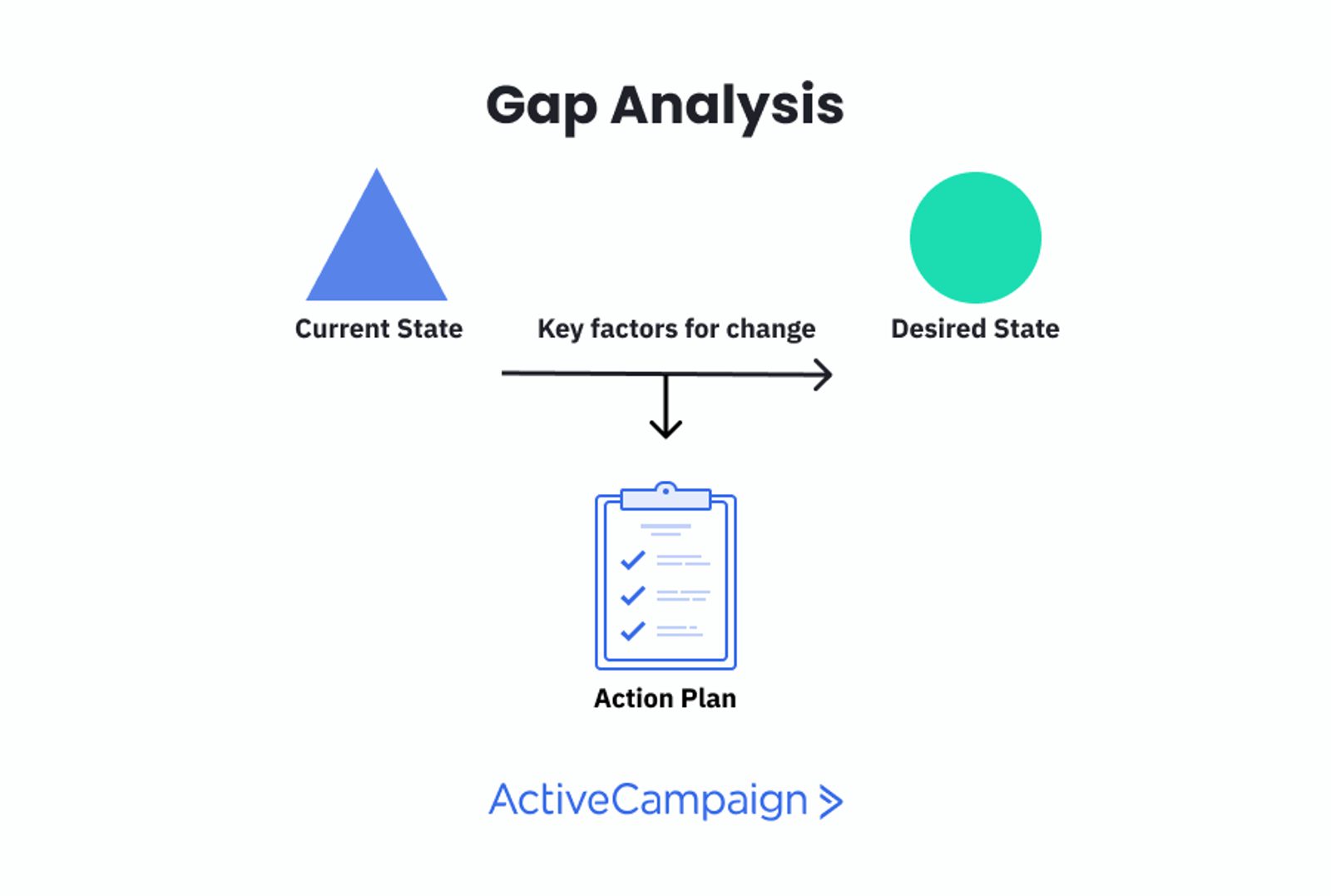
When you think about “CRM pain points,” you might think of:
- Disorganized call notes
- Poorly written follow-up emails
- Generic sales pipelines
- Unsegmented contacts
- Missing contact data
But when you make CRM a customer experience strategy—not just a piece of software—you stop thinking about problems as “CRM pain points” and start thinking about them as customer experience gaps.
Instead of asking:
“How can we make our sales, marketing, and customer support teams’ lives easier with CRM software?”
Ask:
“What keeps our customer-facing teams from offering the best customer experience?”
To identify these gaps, work with the teams you brought in during step 1. Customer-facing teams like sales and support talk to customers daily—they know the gaps in the customer experience better than anyone.
Then, trace the gap backward using the “5 whys.”
If your CRM (and customer experience!) gap is a long sales process causing leads to feel that your business doesn’t understand their pain points or can’t help, start with why. Work to understand your customers better and develop comprehensive buyer personas.
Here’s how to use root cause analysis in customer experience:
- Sales reps cannot make your potential customers see the value in your offering. Why?
- Sales reps spend too much time determining the specifics of your potential customer’s pain points. Why?
- This information isn’t provided when the lead is passed from marketing to sales. Why?
- You don’t gather the information in the lead qualifying process. Why?
- Your lead generation strategies aren’t fully fleshed out. Why?
- You don’t have the proper resources allocated to creating a lead generation strategy.
Instead of stopping after the first “why” and putting a band-aid on a problem that requires stitches, you can diagnose the root cause of the issue and solve other problems in the process.
Use the “5 whys” technique to find the root cause of other gaps in your customer experience:
- An inefficient sales process. Leads stall at specific parts of the sales cycle, fall through the cracks, or take way too long to close.
- Low customer retention. Your sales team has no problem closing deals, but customers don’t stick around.
- A lack of transparency and communication. Marketing, sales, and customer support work in silos. Teams interact with customers blindly and don’t share information or insights with each other.
- Unhappy customers. Your customer support team works overtime but can’t get through all of the tickets—and your NPS score has tanked.
Work with your customer-facing teams to identify these gaps—then work backward to find the root causes. Make fixing those root causes the backbone of your CRM strategy.

When it comes to identifying your sales team's impediments to productivity, where do you start? How do you know a real obstacle when you see one?
“Start by walking the process. You've mapped out what you expect of your reps (research, planning, outreach, task logging, meeting notes, opportunity creation, quote generation, deal logging, etc.). Can you do it?
If you stumble, find documentation is incomplete, or have to freelance/skip a few steps, that is an obstacle. If you find a portion of your process confusing or click-heavy, that is an obstacle. If you have to switch between systems and duplicate efforts, that is an obstacle.
When a rep does pre-call planning, begins outreach, books a meeting, finishes a demo, creates an opportunity, or closes a deal - the last thing you want is your process to punish them. You want to get them back on the phone, confidently charging forward ASAP.”
Step 3: Analyze and optimize the customer journey
The customer experience is the sum of every interaction you have with a customer. And those touchpoints—the customer experience—define your brand:
- 94% of customers would recommend a company with “very good” CX (customer experience)
- 60% of businesses said their customer support improved customer retention
- 59% of customers said they were frustrated by having to repeat themselves to different people at a business
- 42% of customers will “take revenge” after a negative experience by writing a review or posting about it on social media channels
You have to find a balance between anticipating the customer’s needs and managing their expectations. If you don’t meet customer expectations, the customer experience suffers. More and more, the customer experience is becoming the product, especially when the experience is negative.
When you map out the customer experience, you can take a step back and visualize the entire customer lifecycle—and how your CRM strategy can meet those customer expectations every step of the way.
“Skate to where the puck is going, not where it has been.” -Wayne Gretzky
The same applies to your customer base: Your CRM strategy needs to meet your customers not only where they are but where they’re going.
Here’s what today’s customer lifecycle looks like:

The customer lifecycle isn’t linear. To create the most effective CRM strategy, you need to think about the customer experience throughout all 5 parts of the customer journey:
- Awareness
- Consideration
- Decision
- Growth
- Advocacy
Part 1: The buyer’s journey (awareness, consideration, decision)
The first half of the customer journey is all about the process of making an initial purchase. These first 3 stages—awareness, consideration, and decision—are all part of the buyer’s journey:
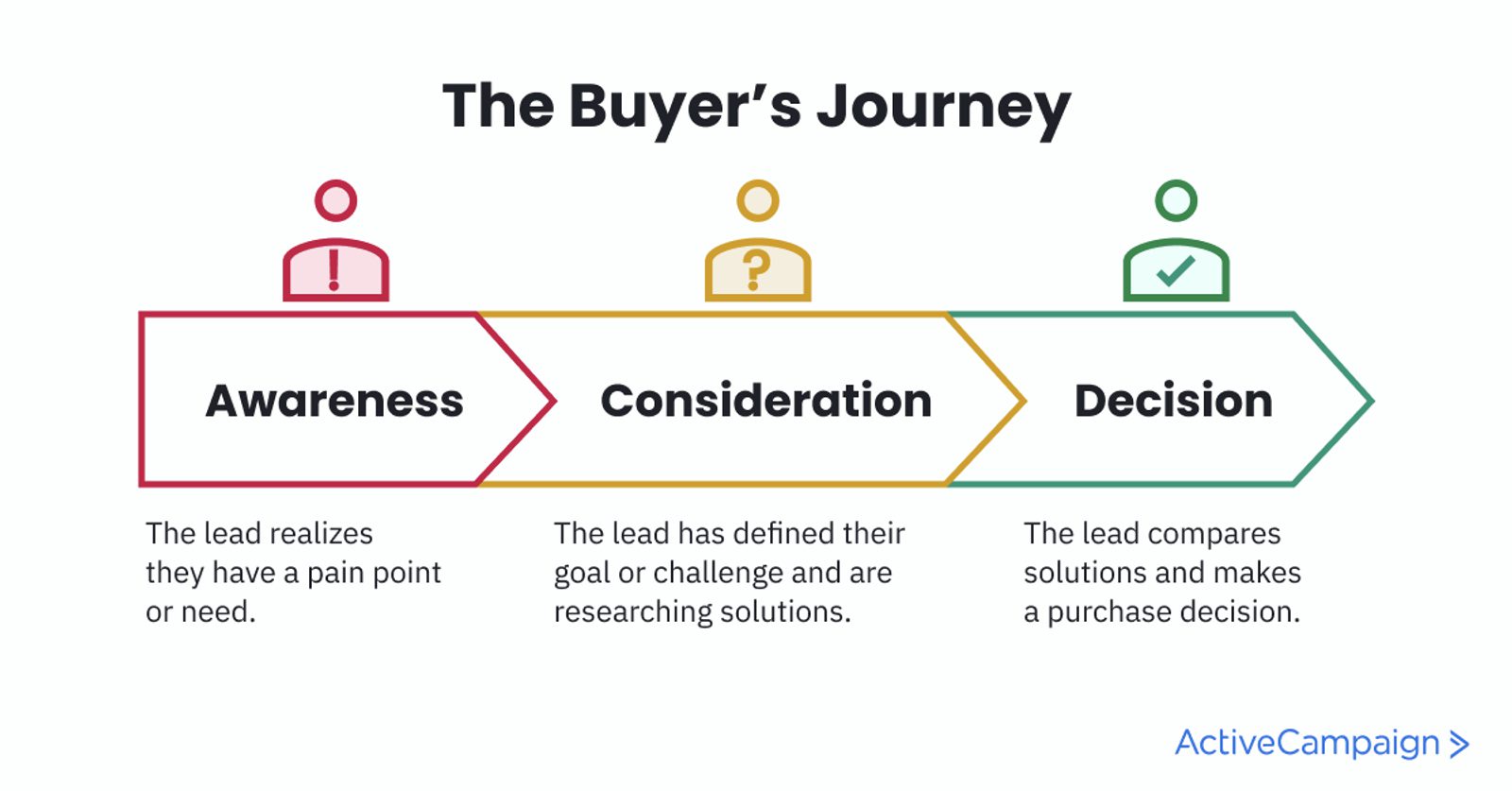
Hundreds of potential customer interactions and touchpoints are within each stage of the buyer journey. To attract the right leads, you need to develop different customer profiles representing valid segments of your target audience. With the right CRM strategy and software in place, you can track those touchpoints with a sales funnel or pipeline:
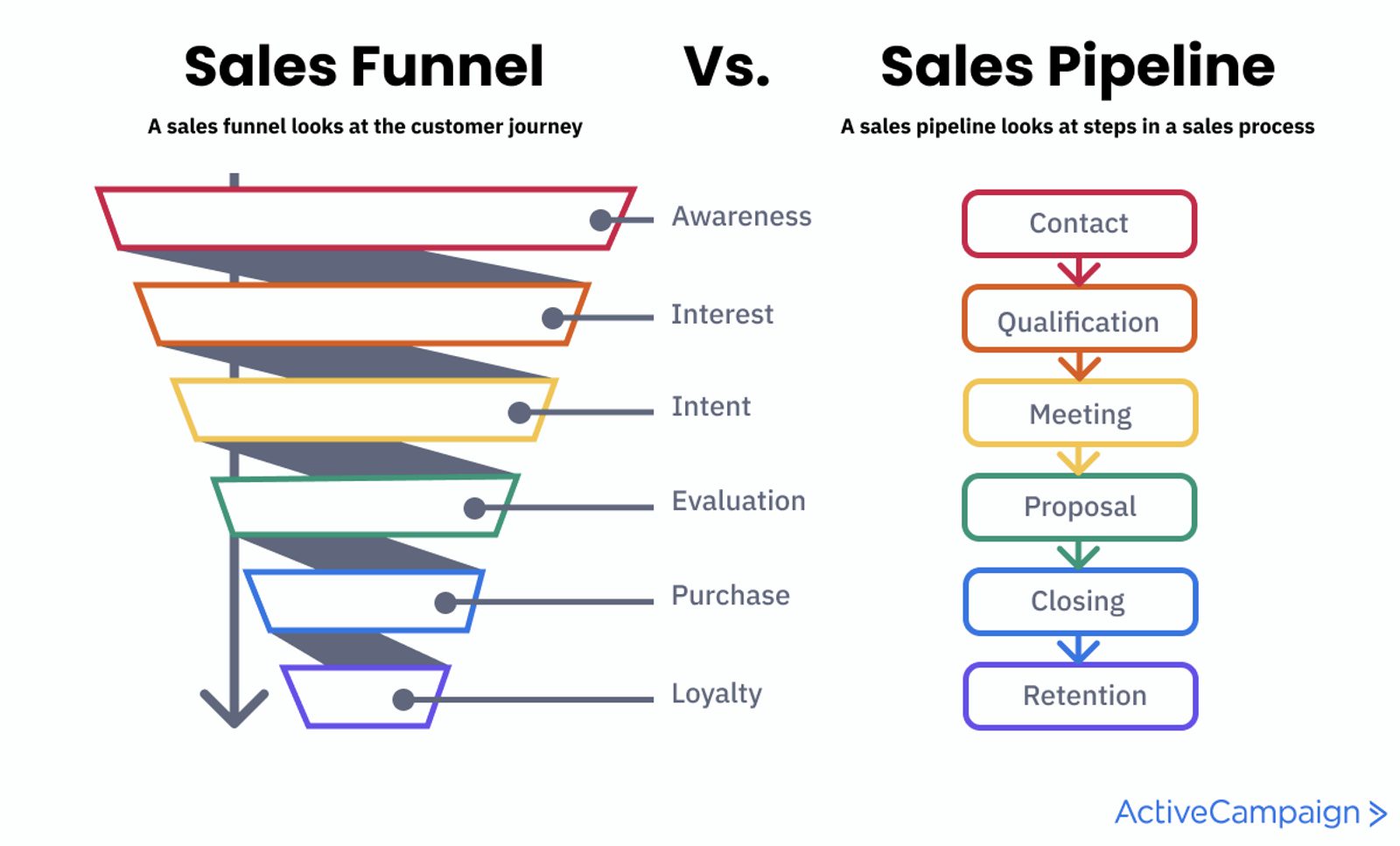
A sales pipeline describes the steps that your sales team takes while qualifying leads and closing deals. A sales funnel describes the customer journey as people go from learning about your company to becoming a customer.
In a sales funnel, leads “funnel” down through the sales process, so the funnel narrows as the number of qualified leads drop. At the bottom of the sales funnel are your successfully converted customers.
Each step in your sales funnel or pipeline is an opportunity to use your CRM strategy to create a better customer experience. (We’ll get into the “how-to” details in the implementation section.)
Part 2: Customer growth and retention (growth and retention)
Your CRM strategy can’t just focus on acquiring new customers—you need to keep them! Retention is a major piece of the customer lifecycle that you can’t afford not to focus on:
- The probability of selling to an existing customer is 60-70%. The probability of selling to a new prospect is 5-20%
- It costs 5x more to acquire a new customer than to hang on to an existing one
- Customers who receive value enhancement (education, advice, validation) during a service experience are 86% likely to renew or repurchase.
Your customer relationship doesn’t stop when they sign a contract. Think about the touchpoints you have after the sale.
Touchpoints like:
- Nurture campaigns
- Customer service and support interactions
- Loyalty and reward programs
- Billing questions
- Referral programs
- Upsell and cross-sell opportunities
- Onboarding and training
When you do all those things right, you’re rewarded with the 5th part of the customer lifecycle: Advocacy.
“Your best sales force is your customers advocating on your behalf. Your worst sales force is your customers not advocating on your behalf and writing negative things online.” -Tiffani Bova
Studies show that nearly 54% of Americans read product reviews for all of their purchases.
Even more telling: customers said that good reviews are the biggest factor in their online purchases—more important than free shipping or discounts.
That’s social proof, 1 of Robert Cialdini’s principles of persuasion:
“We can see that social proof is most powerful for those who feel unfamiliar or unsure in a specific situation and who, consequently, must look outside of themselves for evidence of how best to behave there.” -Robert Cialdini, Influence

Customers trust each other more than they trust you—especially when they’re in the early stages of the buyer’s journey. When you create a great customer experience, your customers become advocates that can help bring you more customers, which is why you need to cover each part of the customer lifecycle in your CRM strategy.
Step 4: Understand that people don’t like change
Think about what you’ll need to execute CRM strategy—what needs to change? What new tools, strategies, or processes will your employees actually use?
Your current company culture and existing CRM strategy will determine how much you can change in your new CRM strategy (and how quickly).
In their 1998 book, Evaluative Inquiry for Learning in Organizations, Hallie Preskill and Rosalie T. Torres showed that “mental models” drive much of what we do. They write:
“These values, beliefs, assumptions, and knowledge have been developed over time, are thought of as ‘truths,’ and are what guide people in their everyday lives. They are manifested in the taken-for-granted behaviors by which we function and often are manifested in opinions we hold.”
Your teams have developed mental models of their roles, responsibilities, and job processes. Introducing a change disrupts these models and asks people to alter what they think they know.
Francis Duffy’s 2003 commentary, “I think, therefore I am resistant to change,” expands on this idea:
“Given new information to consider, individuals will search their existing mental models to ensure that the new information is consistent with what they know. If the new information fits an existing mental model, the person accepts the information…
If the individual cannot link the new information to an existing mental model, he or she may… discard the information as irrelevant, unimportant, or wrong.”
Everyone has a different capacity for change. If your proposed CRM strategy is a radical departure from your current internal processes, it will never work if you implement it all at once. Incremental change is the best path to sustainable and lasting change.
“There is only 1 way… to get anybody to do anything. And that is by making the other person want to do it.” -Dale Carnegie
Understanding your company culture and limitations is essential in determining an implementation plan. Lowering your expectations and preparing for pushback is an often overlooked step in creating a CRM strategy.
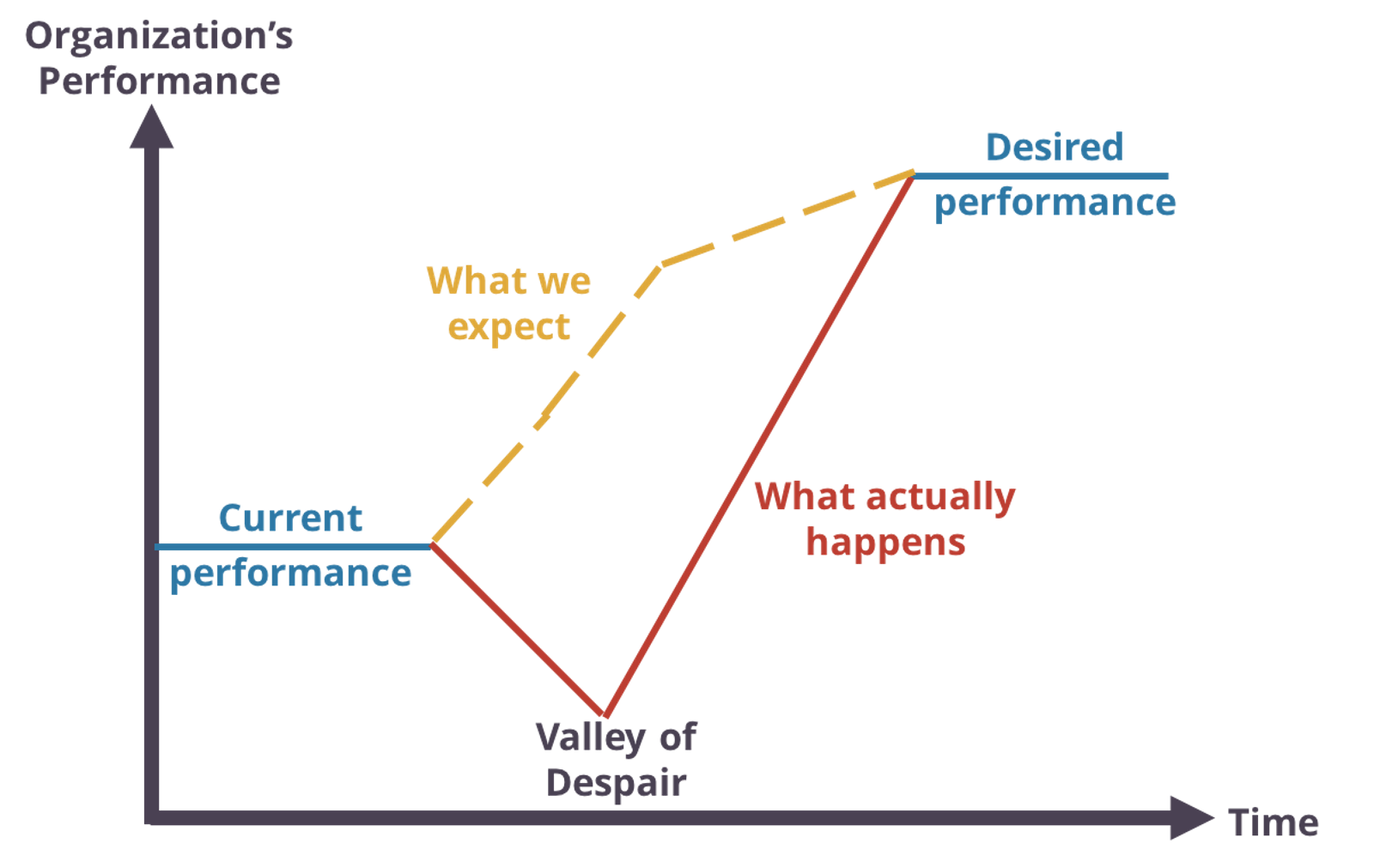
“Your CRM will work perfectly up until you introduce it to your employees. If your tool doesn’t fit with or help their routine, team members will push back against the change, creating new problems you need to solve… These are all people issues, not technology issues… If these cultural barriers go on unnoticed, your team will continue to reject your CRM.
Without proper communication, training, or set processes, they will never see the value of the CRM system or experience the true benefits of the tool.” -Dave Whiteside
6 ways to implement a better CRM strategy
You’ve set your customer experience goals.
You mapped out your CRM strategy.
Now what?
Start small.
What are small, achievable steps you can take right now (or in the near future) toward creating the best possible customer experience?
Grabbing our free customer relationship management template, for one!

A paper by Karl Weick argues that when you start with small wins, you gain momentum toward solving bigger problems. Sometimes, you don’t know what those bigger problems are until you have some small wins under your belt:
“Once a small win has been accomplished, forces are set in motion that favor another small win. When a solution is put in place, the next solvable problem often becomes more visible.” -Karl Weick
Expert Insight: Thomas Wieberneit, Co-Founder and CEO of aheadCRM>Valantic

How can companies who are implementing a CRM strategy apply the mindset of "thinking big while acting small" to their change management process?
“The secret to thinking big while acting small lies in:
- Having and executing on a strategy, which bases upon a vision that defines the objective
- Acknowledging that this strategy may change more frequently than one likes it to change
- Delivering value towards this strategy in little increments
Doing these 3 things well, of course, needs a lot of communication. It also means that the strategy needs to get revisited frequently and, based upon the currently valid strategy, initiatives are reprioritised — with the consequence that different projects may get priority because they promise more value.
Where there are quick wins, these can always be phased in.
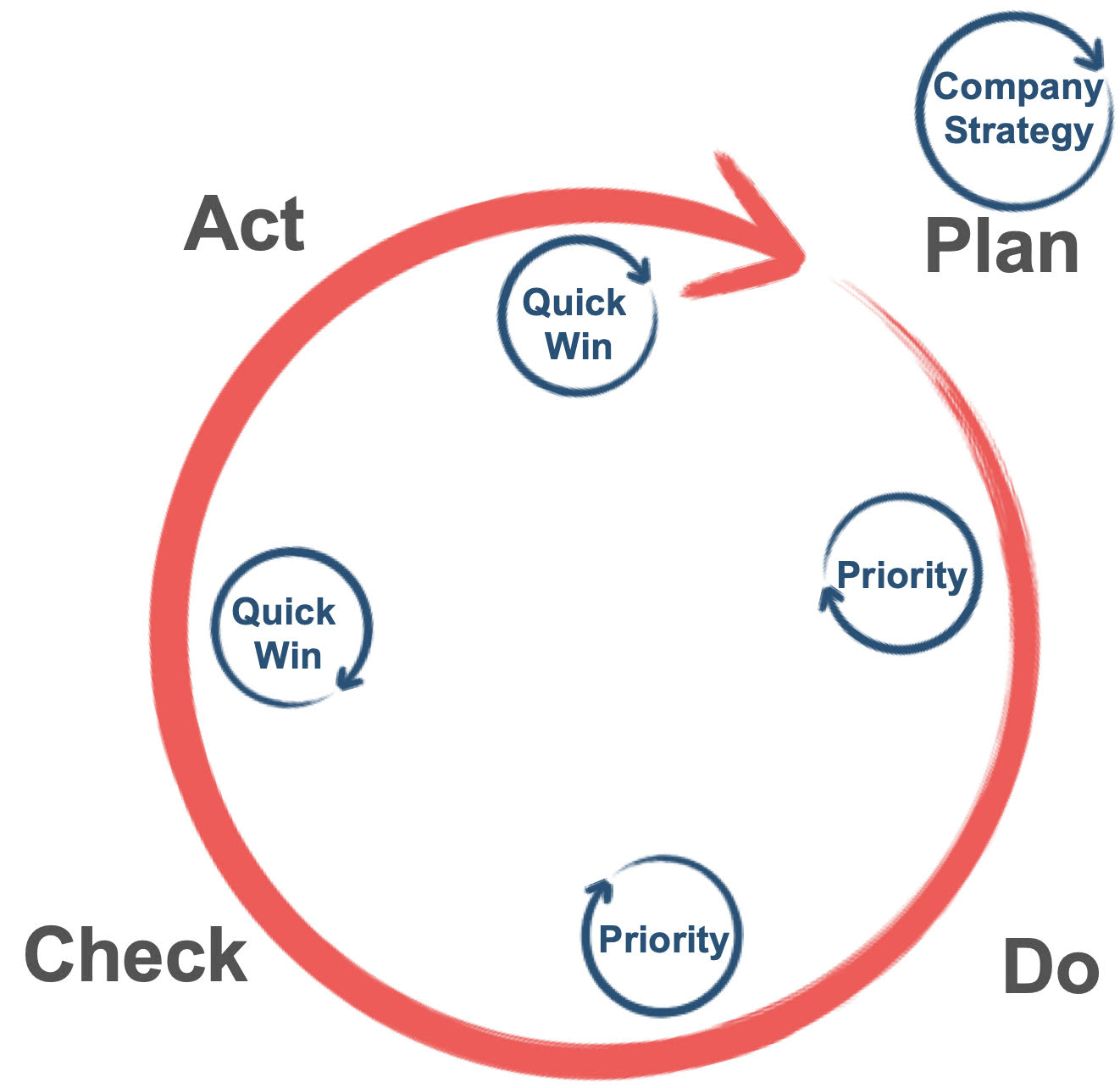
This can be put onto a slightly extended Deming circle. The company strategy that gets frequently reviewed drives the Deming circle. Inside the circle, we have prioritized projects and quick wins that deliver to the strategy."
For more information on this topic, check out these posts:
Your exact CRM strategy will be unique, but there are some key steps to improve customer relationship management from which almost any business will benefit. Regardless of your industry, these 6 steps will make your CRM strategy and CRM software work more effectively and efficiently.
- Audit your data (and clean it up)
- Define your terminology and processes
- Create 1 source of truth
- Automate the customer experience—don’t generalize it
- Integrate your CX toolkit
- Train your teams
1. Audit your data (and clean it up)
We’re obsessed with data. We create it, collect it, analyze it, slice it, dice it, worry about it, ask about it, and demand it.
There’s a colossal amount of data out there, but more is not always better.
Collect only the data you need to create the best customer experience. This might include your contacts’…
- Preferred contact method
- Demographic information
- Interests and preferences
- Purchase history
- Website visits
- Engagement with your email content
It’s not enough to decide which data to collect moving forward—you also need to clean up your existing data. Here’s why:
- By 2025, 80% of organizations attempting to scale digital business will fail because of their approach to data and analytics
- IBM estimates that poor data quality costs the United States $3.1 TRILLION a year
- Bad customer information costs most companies between 15%-25% of total revenue
A thorough data audit saves your whole company time and money.
In marketing, outdated email addresses mean high bounce rates, worse email deliverability, and lower sales numbers. When you only email engaged contacts, you can improve your deliverability—and your campaigns will sell more.
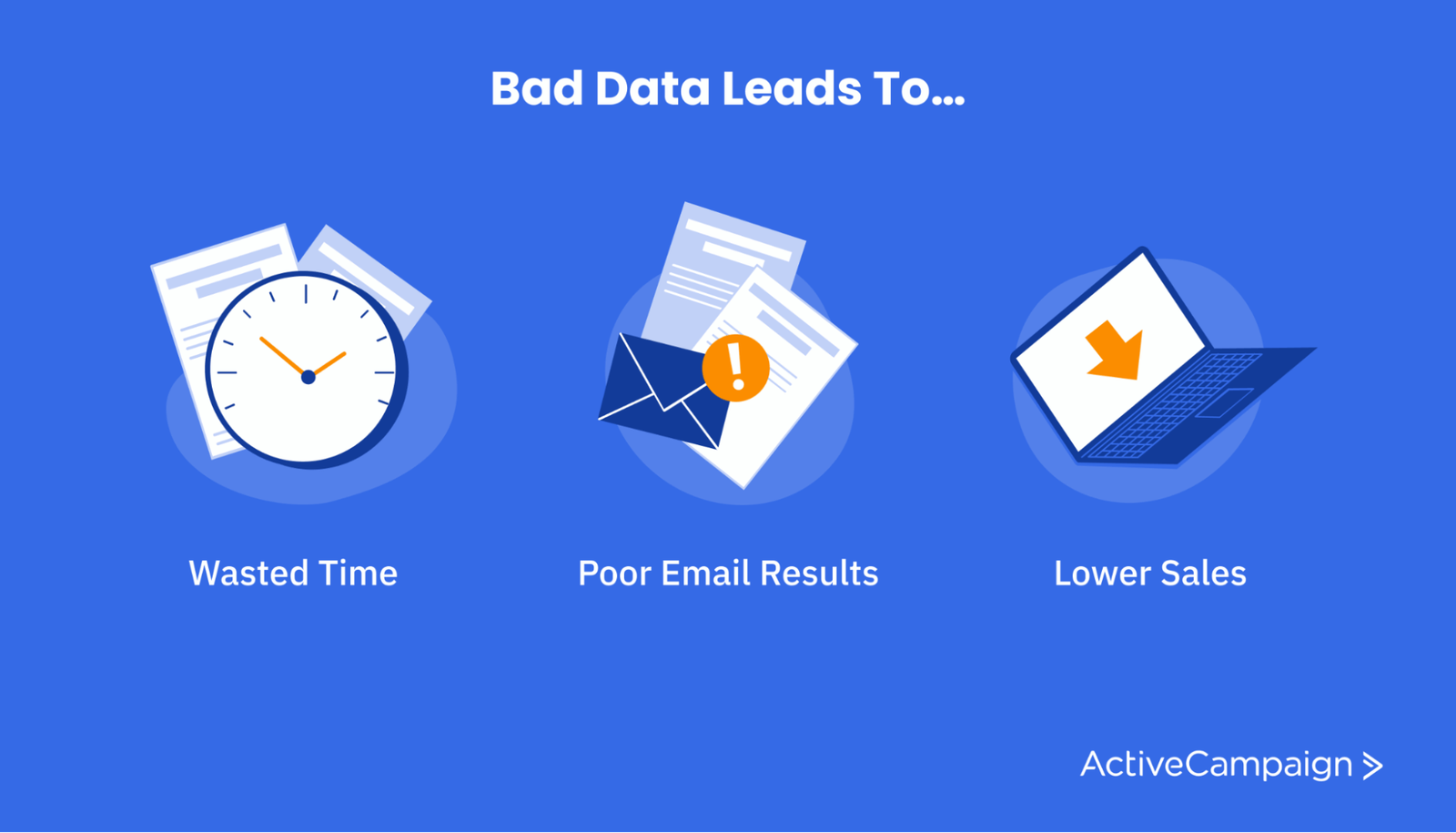
Bad info is a sales rep’s worst nightmare. Phone numbers that don’t work, outdated emails, outdated job titles… Clean data saves your reps time hunting down up-to-date info—so they can focus on selling.
Here’s how to audit your customer data:
- Locate and gather all of your customer information
- Use the results of Step 1 to organize the information according to your needs
- Prioritize the customer information by value to your business
- Remove any duplicate and incorrect information
- Add any information that is missing
- Create a uniform system for data entry
- Repeat the audit process at least once a year
2. Define your terminology and processes
80% of marketers and 70% of sales reps rank “strong alignment between sales and marketing” as important to their company’s success. How do you get your teams on the same page?
Start with language. Your teams need to use the same terms and definitions. Otherwise, communication breaks down, your employees become confused, and sales opportunities disappear.
Accurate reporting and team alignment are impossible if your teams don’t speak the same language. You end up with problems when you:
- Have different naming conventions for the same term
- Have the same naming conventions for different terms
- Lack uniform documentation
CRMs involve a lot of jargon—define (and document the definition of) each piece:
- How do you define a lead? An opportunity? A prospect? A contact? A customer?
- What deal stages do you use?
- What do your sales pipelines look like?
- What information makes a lead qualified?
- What’s an MQL? An SQL?
- Do you use lead scoring?
- When does the handoff from marketing to sales happen?
“Specialized vocabularies develop in the business world every day to support new or specialized disciplines, departments, problems, and innovative opportunities. The term “customer” means different things to different departments because, at some point, each required the term to mean something specific to them.
Language constantly grows and divides, becoming increasingly subtle and nuanced. But over time, systems don’t agree, which can cause tension and conflict in organizations.” -Thomas C. Redman, Harvard Business Review
How do you define your CRM processes?
Visualization is key. Start with a flowchart. Map it out. Stefanie Cramer, ActiveCampaign’s Customer Experience Program Manager, says:
“If you can flowchart something, you can make it happen.”
Write it all out—every step. You’re not trying to optimize (yet); you’re working to understand. Understanding how people engage with your brand is vital for creating a great customer experience.
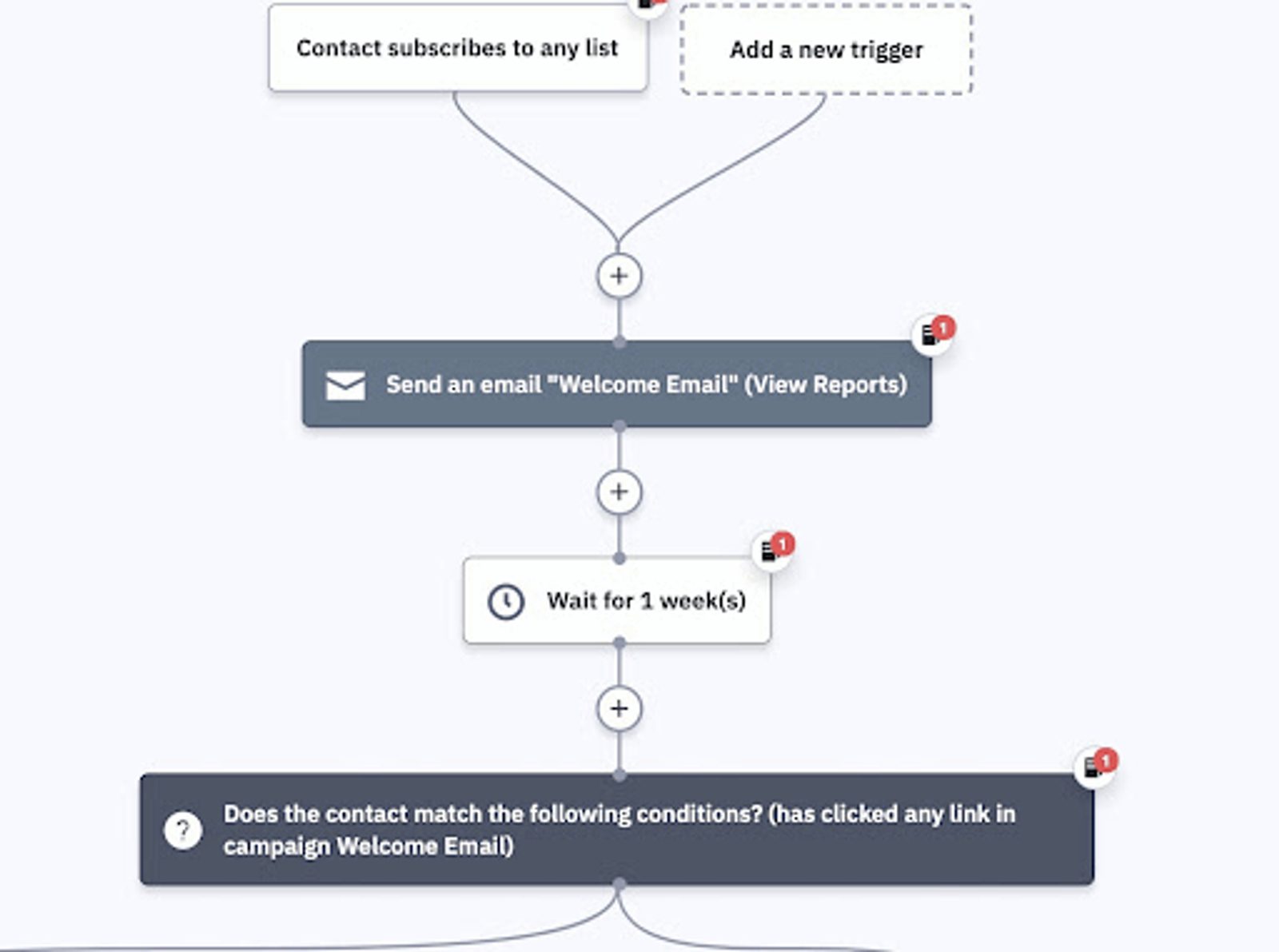
Make a note of everything involved in the process:
- Inputs
- Steps
- People and teams
- Outcomes
- Actions
You can focus on efficiency only once you have all the necessary pieces.
Tom Wujec’s TED Talk uses toast (yum!) to show how you can simplify the task of process definition:
- Visualize your processes with drawings and flowcharts
- Iterate on the process with notes
- Optimize the process with group input
- Repeat until you’re satisfied
Processes evolve as time goes on. Your terminology and processes need to evolve with them. Like data hygiene, this requires diligence and consistent effort.
3. Create 1 source of truth
Where do your current CRM processes and data live?
- A spreadsheet?
- Post-it notes?
- A bunch of isolated systems?
- An outdated CRM tool?
You need to move all of that fresh, clean data and those well-defined processes into 1 place: Your CRM software.
Migration Service Done Right
How do you store your customer information within your new CRM?
When you think about storing information in your CRM, think about French cuisine.
The culinary industry has a system that makes the world’s greatest kitchens incredibly efficient. The system is mise-en-place, a French phrase that translates to “put in place.” In professional kitchens, mise-en-place means to gather and arrange the ingredients and tools needed for a specific dish.
“Mise-en-place is the religion of all good line cooks. Do not **** with a line cook’s ‘meez’—meaning his setup, his carefully arranged supplies of sea salt, rough-cracked pepper, softened butter, cooking oil, wine, backups, and so on.
As a cook, your station, and its condition, its state of readiness, is an extension of your nervous system…
The universe is in order when your station is set up the way you like it: you know where to find everything with your eyes closed, everything you need during the course of the shift is at the ready at arm’s reach, your defenses are deployed.
If you let your mise-en-place run down, get dirty and disorganized, you’ll quickly find yourself spinning in place and calling for backup.” -Anthony Bourdain, Kitchen Confidential
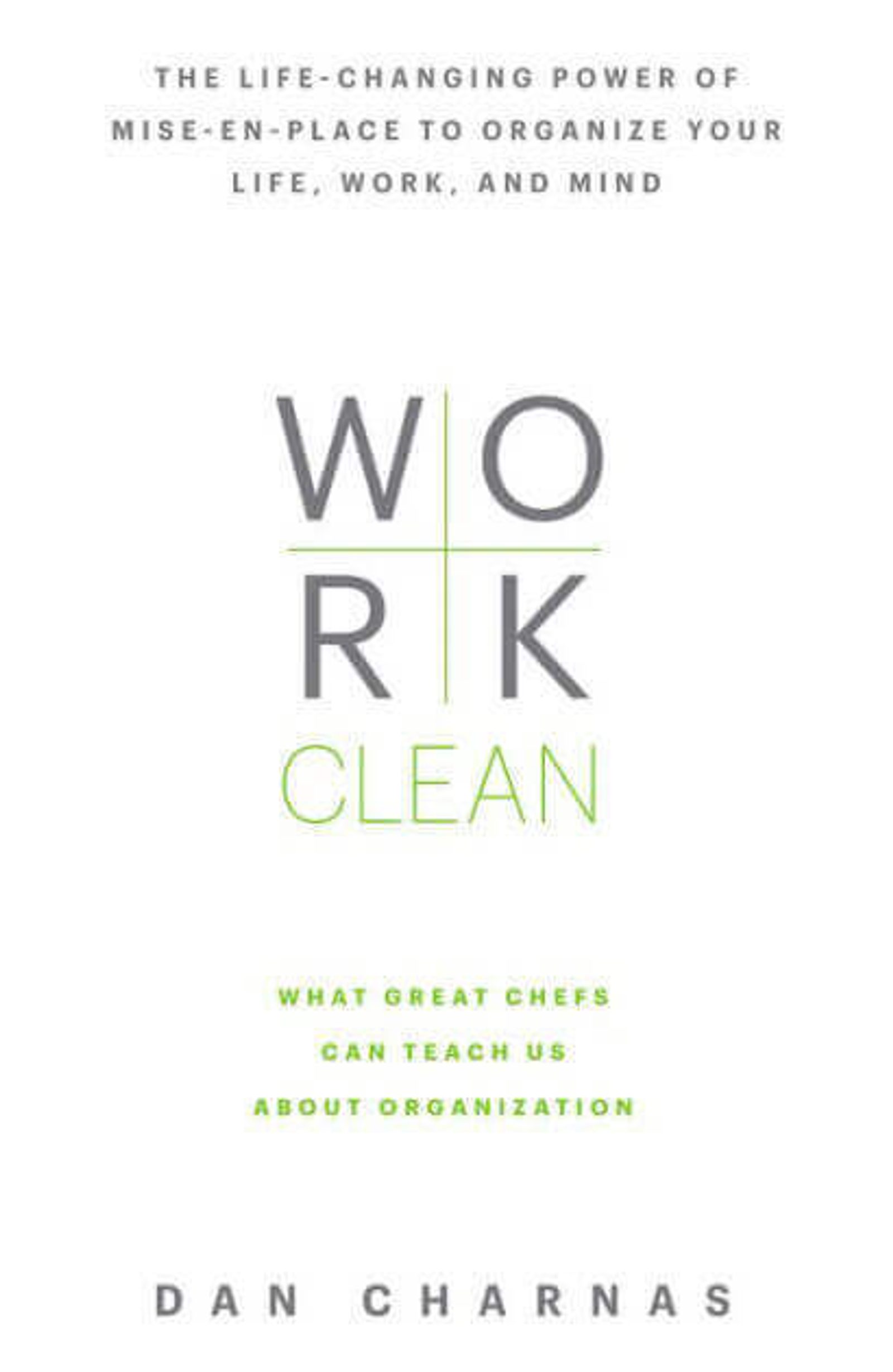
When you apply mise-en-place to your CRM strategy, you’ll have a place for each piece of customer information, interaction, and process.
Today’s CRM software tools make it easy to create custom contact fields. Mapping your data to custom fields gives these points of information a place to live in your CRM software.
Use your flowcharts and process outlines to map your processes out in your CRM. Your CRM becomes the single source of truth for your employees when they need to find information on the customer lifecycle.
When your CRM software is the source of truth for your CRM strategy, the customer experience improves.
4. Automate the customer experience—don’t generalize it
Automation improves the customer experience and your company’s productivity:
- Automating the flow of data into and out of your CRM can save you up to 23% of your day.
- The use of sales intelligence tools increased to 43% in 2020 (up from just 28% in 2018).
- 38% of companies use their CRM system to automate customer and prospect outreach.
Automation lets you save time by removing the burden of manual tasks. Automation also decreases the possibility of human error in data entry and manual tasks, keeping your data clean.
Process automation means that your processes will unfold the same way every time: no rogue sales reps, no missed steps, no customer service issues falling through the cracks.

If you automate your CRM, you can see exactly where your contacts:
- Engage with your marketing campaigns
- Connect in the sales cycle
- Convert into customers
- Need support and additional service
Automation helps improve sales lead management and customer retention.
How does automation improve sales lead management? Automation means you can contact new sales leads at the critical moment—right when they become a lead. Lead qualification odds decrease by 80% when you wait longer than 5 minutes to reach out.
Timely customer service and support are critical for customer retention. Automate the follow-up process to ensure every customer issue gets resolved and logged.
- 90% of customers say customer support is an important factor for both buying decisions and brand loyalty.
- 58% of customers have stopped doing business with a company due to poor customer service relationships.
- 32% of customers say that having to repeat information multiple times is their biggest customer service frustration.
Improving customer experience is your ultimate goal. But if every customer is different, how can automation fit into your CRM strategy? That would mean every customer has the same automated experience, right?
Wrong.
Soundsnap, the world’s most widely used sound effects platform, added automation to its CRM strategy to personalize the customer experience. They incorporated:
- Surveys to collect specific contact information that automatically segments their contacts
- Behavioral targeting to automate follow-up messaging based on contact preferences
- Predictive sending to send automatic emails at exactly the right time for each contact
- An automated onboarding sequence customized to each new member
The results?
- A 300% month-to-month increase in revenue attributed to emails when using behavioral targeting
- A 20% increase in email open rates for automated campaigns using predictive sending
- A 45% completion rate of their automated survey
This is customer experience automation (CXA) at work.
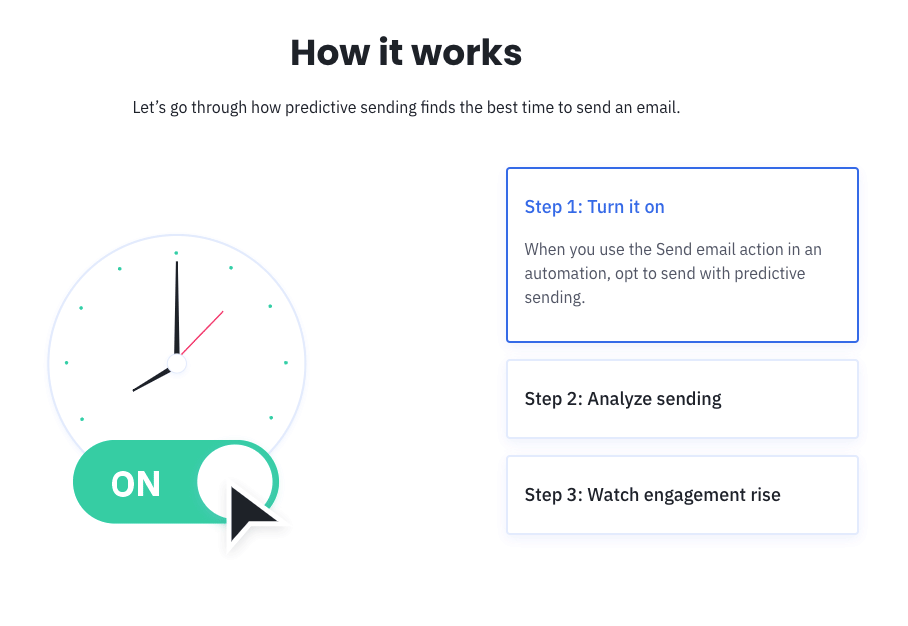
The Tampa School of Real Estate incorporated automation into their CRM strategy to provide a personalized experience for their current and prospective students. They use:
- Site and event tracking to monitor contact engagement and segment their contacts
- Integrated real estate investor CRM and email automation for targeted messaging
- Automated contact creation using lead magnets and landing pages
- Conditional and personalized content in their automated welcome email series
- 5x more sales of their online courses
- 50% year-over-year sales growth
- 40-50% email open rates
Automation doesn’t generalize the customer experience. It optimizes the customer experience.
5. Integrate your CX toolkit
CRM software is only 1 part of your CRM strategy and is only 1 piece of your tech stack. What other software and tools do you use to give your customers the best experience possible?
Your customer experience tools and apps can include:
- Ecommerce platforms and tools (Shopify, BigCommerce, Stripe, etc.)
- Form and survey apps (Typeform and Jotform)
- Landing page builders (Unbounce)
- Marketing automation and email marketing platforms (ActiveCampaign)
- Lead generation tools (ClickFunnels, Beacon, ConvertFlow)
- Accounting apps (QuickBooks, Zoho Invoices)
- Event management and scheduling software (Calendly, Eventbrite, Mindbody)
These tools might not be branded as “CRM software,” but they can all play an important role in the customer experience—so they should all be a part of your CRM strategy.
When you integrate each piece of your customer experience toolkit with your CRM system, all of your tools talk to each other.
When all of your tools talk to each other, your team's processes and data stay aligned.
When your team’s processes and data are aligned, the customer experience improves.
Website, scheduling, and ecommerce integrations pull and display valuable information about the customer experience, so you know exactly when a contact:
- Makes a purchase
- Books an appointment
- Submits a form
- Visits a product detail page more than once
- Downloads gated content
- Uses a promo code
- Engages with your website or blog
- Signs up for an event
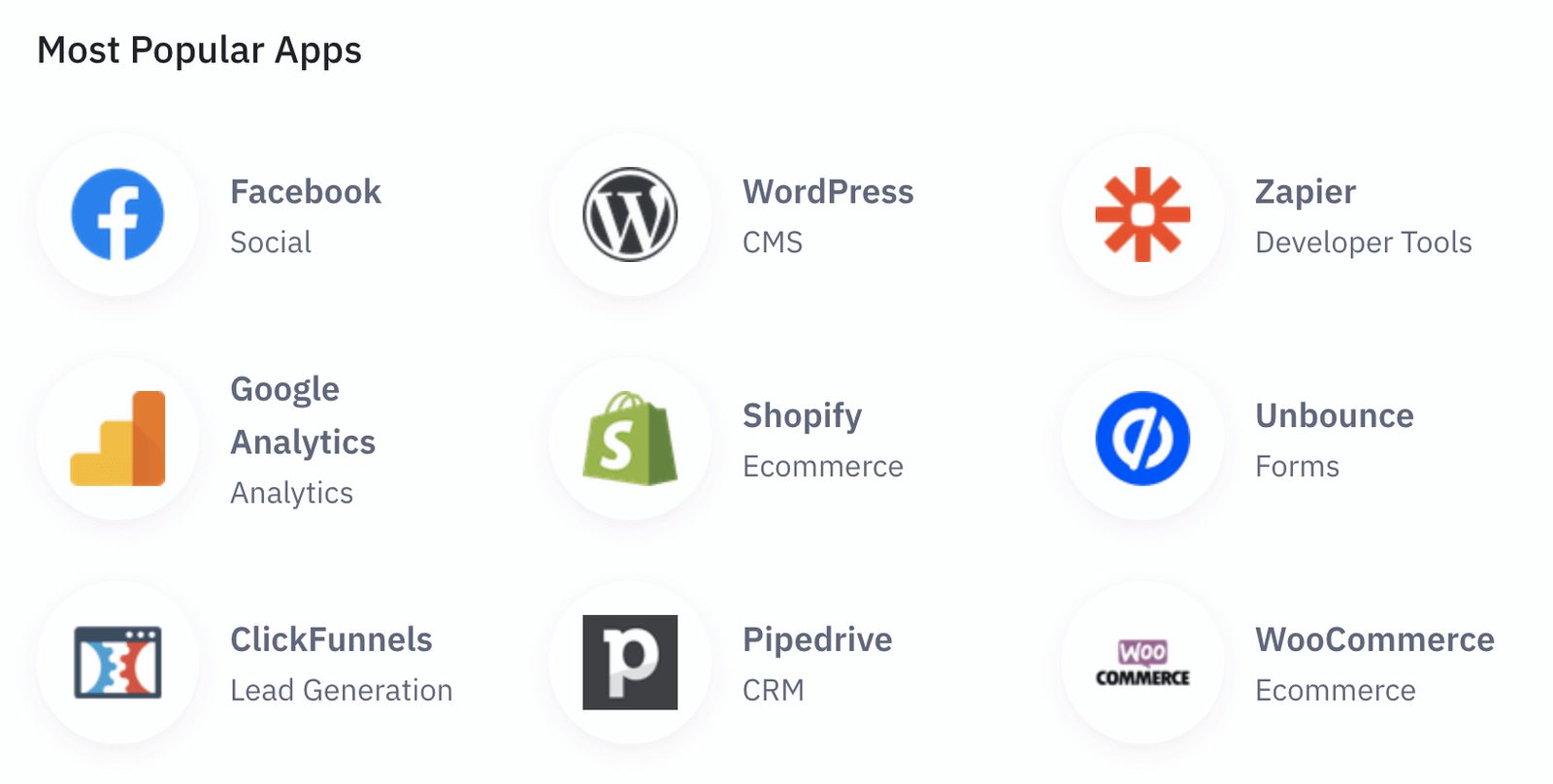
The most popular apps in ActiveCampaign’s apps and integrations marketplace span several categories, including social media, CMS, analytics, ecommerce, forms, developer tools, lead generation, and CRM
There are 3 ways to integrate different apps and tools with your CRM software:
- Native or direct integrations
- 3rd party or middleware integrations
- Application programming interface (API) or custom integrations
Every CRM tool has different integration capabilities. Before you implement a new piece of CRM software, make sure that it integrates with your other customer experience tools.
Chicago’s Museum of Science and Industry (MSI) uses Salesforce as their CRM solution and ActiveCampaign as their CXA platform. Salesforce integrates directly with ActiveCampaign, which means the 2 platforms share data instantly—no manual data transfer is required.
“By using ActiveCampaign with Salesforce, we don’t have to manually transfer data. There’s no wait. The Museum of Science and Industry can immediately connect with guests.” -Shawn Hackett, MSI’s Manager of CRM
Salesforce stores and organizes data about MSI’s guests and members. “ActiveCampaign is what we use to act on that data,” said Steven Beasley, MSI’s Senior Director of Digital Experience.

With 350k+ active contacts, MSI doesn’t want to send every contact the same emails. By integrating ActiveCampaign as their CXA platform with Salesforce as their CRM platform, MSI can send campaigns to multiple audiences—without jumping between tools.
“MSI has a large list—ActiveCampaign lets us manage it,” Shawn said. “With advanced search and automation, I don’t have to manually manage our list. I can focus on strategy.”
(PS: ActiveCampaign offers direct integrations with Unbounce, Calendly, Salesforce, Google Sheets, and more. For a full list of integrations, visit our apps and integrations marketplace.)
6. Train your teams
Your teams should already be bought into your CRM strategy—now it’s time to train them on executing it with your CRM software.
If your team doesn’t understand how to use your CRM software… they won’t.
Hands-on CRM training can mean the difference between creating a great experience and a poor 1 (for both your teams and your customers):
- Research shows that 53% of top-performing salespeople are confident in their CRM data, significantly more than non-top performers.
- Companies who collaborate and share content with more than three-quarters of their team experience 41% account growth.
- 60% of employees say they experience frustration with new software. And 40% avoid using these technologies after a negative experience.
Give your sales and marketing teams ample time and resources to get comfortable with how they’ll use the new software. Teaching best practices upfront softens the learning curve and saves time for teams who will be using the CRM system every day.
How to measure CRM strategy success
“What gets measured gets managed.” -Peter Drucker, The Practice of Management (1954)
You created and implemented a customer-centric CRM strategy.
If you set it all up the right way, using CRM software is easy because:
- When you have clean data and clear processes for data formatting and maintaining contact information, everything stays organized and easy to find
- When you train your sales and support teams and give them the resources they need to use the CRM software efficiently, you get their buy-in, and they feel confident using the tool
- When you make CRM part of the daily routine by building it into every sales, marketing, and support process, using it becomes second nature
But how do you know if it works?
Remember the gaps you identified while creating your strategy? If your CRM strategy doesn’t work…
- Your sales team doesn’t have the information or tools they need to convert marketing leads
- Leads stall at specific parts of the sales cycle, fall through the cracks, or take way too long to close
- Customers don’t stick around
- Marketing, sales, and customer support don’t share information or insights with each other
- Your customer support team works overtime but can’t get through all of the tickets
Good news: You can get ahead of those worst-case scenarios by tracking key performance indicators (KPIs).
KPIs tell you if your CRM strategy works and if you’re on track to meet your CRM goals.
You can define your KPIs during the goal-setting stage, but as you learn more about your customer relationships, the ways you track success might change. Give yourself (and your teams) permission to change them as your goals and strategy evolve.
Choose the KPIs that measure the things you want to improve.
- If you want to increase sales efficiency, track the length of the sales cycle.
- If you want to increase sales, track conversion rate and new revenue.
- If you want to decrease churn, track customer retention.
- If you want to increase customer satisfaction, track your NPS or CSAT score.
When you choose your KPIs, make sure you focus on measuring the customer experience—not just the productivity of your customer-facing teams. (This helps you measure how well you’re solving those root causes we talked about earlier.)
Customer experience metrics (beyond NPS)
Customer experience metrics (aka CX metrics) are KPIs used to measure how happy your customers are with your business throughout the customer lifecycle.
Net promoter score (NPS) is the classic CX metric. NPS measures how likely your customers are to recommend your business to someone else on a scale of 1 to 10. But NPS shouldn’t be your only CX metric—especially because it’s not always a reliable measure of customer experience. If you’re looking for a metric to predict churn and revenue, look elsewhere—like retention metrics.
In addition to NPS, you can track CX metrics like:
- Churn and retention rates
- Referrals
- Cross-sell and up-sell revenue
- Length of the sales cycle
- Customer Lifetime Value (CLTV)
- Average revenue per customer
Measure your KPIs regularly. If you find yourself off-track, adjust your CRM strategy accordingly. Be willing to test different parts of your CRM strategy to meet your CRM goals:
- Re-examine your lead scoring model
- Replace the content in your marketing automation emails
- A/B test nurture campaigns
- Work more (or fewer) leads per sales rep
- Clean up your data, then re-run reports
Read more on how to make a CRM report and measure these metrics.
How to set CRM goals
80% of New Year’s Resolutions fail by February. Why?
The clock strikes midnight on December 31st, and a new year begins. Tomorrow, gyms across the country will be packed with people ready to make this year THE year they get in shape.
Unfortunately, most goals (New Year’s goals and CRM goals) are:
- Too vague
- Too easy
- Not measurable
Researchers Locke, Shaw, Saari, and Latham found that setting specific and challenging goals leads to higher performance than easy goals, “do your best” goals, or no goals.
Locke et al. argue that goal setting is most likely to improve performance—aka help someone succeed—when:
- The goals are specific, challenging, and attainable
- Supervisors give feedback on progress toward the goal
- Managers or supervisors support the goals
- The person accepts (and is excited about!) their goals
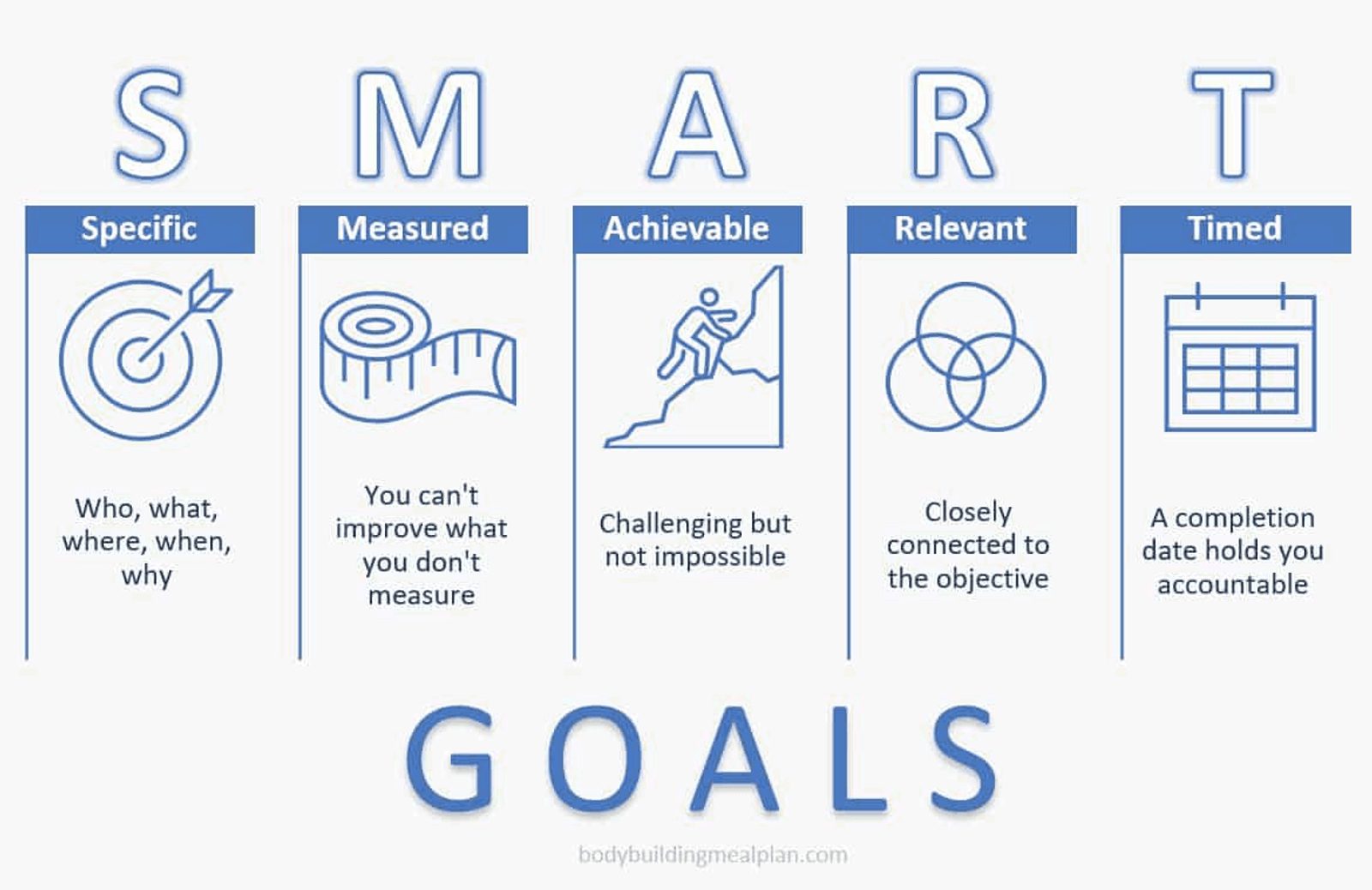
How can you apply this to your CRM strategy?
Why goal setting should be a team effort
“A goal properly set is halfway reached.” -Zig Ziglar, American author, salesman, and motivational speaker
Now you know your goals need to be specific and challenging and what “good” CRM goals look like. But who should be in charge of setting your CRM goals?
Goals should be decided and agreed on by a group. They’re not mandates from “A Benevolent CRM Dictator” (ABCD).
In 1 study on goal setting, 90 college students were given a brainstorming task: Come up with a bunch of ideas on a certain topic within 20 minutes.
To set the number of ideas they needed to brainstorm, students were either assigned a goal, told to “do their best,” or asked to participate in setting a specific, difficult yet attainable goal.
The results?
Students who participated in setting their own goals brainstormed more ideas than the students who had goals assigned to them or were told to “do your best.”
When people participate in setting their own specific and challenging goals, they’re more likely to reach (or exceed!) those goals.
Remember: CRM strategy is about more than just implementing new CRM software, so setting goals should involve more than just the teams who will use a CRM tool. When you sit down to set your CRM goals, you need to have customer experience top-of-mind—and involve every team that touches it. (We’ll talk more about getting buy-in from these stakeholders in a bit.)
The final thing to keep in mind about CRM goals is that they will change throughout the strategizing, implementation, and measurement stages of your CRM strategy—and that’s okay! Don’t keep your goals stagnant; they should change as your priorities change and as you learn more about your customers throughout the CRM strategy process.
4 CRM goal examples not to follow (and 4 to set instead)
Your customer experience goals are the backbone of your entire CRM strategy, from ideation to implementation. It’s critical to set good goals that are specific and challenging.
You might want to set CRM goals like “eliminate customer churn” or “close every single deal that comes through our pipeline.” However, these goals are vague. They have no deadlines, metrics, or action plans attached, making them impossible to reach.
Here are 4 vague CRM goal examples that you shouldn’t set—and challenging, specific alternatives to each.
1. Decrease churn
Don’t set this goal: “Increase customer retention.”
Try this instead: “Our goal is to decrease customer churn by 25% by the end of next quarter.
Too many of our customers leave after 1 purchase. Repeat customers spend more (and cost less) than new ones, so we want to increase customer loyalty. We will create a better customer experience from the first touch throughout the customer lifecycle. We will focus on improving communication between our sales and customer support teams.”
2. Shorten the sales cycle
Don’t set this goal: “Speed up the sales process to close deals more quickly.”
Try this instead: “Our goal is to reduce the length of our sales cycle by 50%, from an average of 4 months to 2 months.
Too many leads stall during the sales cycle, then lose interest or fall through the cracks—and the deal never closes. We want to make sure that every potential customer has a positive, timely experience by regularly following up with leads throughout the pipeline.”
3. Increase sales
Don’t set this goal: “Increase revenue.”
Try this instead: “Our goal is to increase new revenue by 50% this year.
We need to continue growing as a business by bringing in more new customers and revenue. By focusing our sales team’s time and resources on leads that are the best fit for our business, we create a better buying experience for each potential customer. In turn, this lets us close more high-value deals and bring in more new revenue.”
4. Decrease customer acquisition cost (CAC)
Don’t set this goal: “Spend less per sale.”
Try this instead: “Our goal is to reduce CAC from $115 to $80/customer by the end of the year.
To become more profitable, we need to reduce our CAC. We can save time and money throughout the sales cycle when we focus on selling to the customers who our product or service helps the most. We must identify our ideal customers and focus on selling to them.”

How can companies keep CX and business goals top-of-mind when creating and implementing a CRM strategy?
“The biggest risk when building and implementing a “CRM strategy” is that it becomes focused on the technology and not on the business. Technology must be the enabler of strategy, not the driver.
Companies tend to be more effective if they define business goals, then use them to build a CX strategy. An effective CX strategy is much bigger than just CRM and touches all business functions.
Delivering the desired experience must be distributed across the company, not centered in the traditional “customer-facing” part of the organization. In effect, the entire company is customer-facing. The quickest way to provide a less than desired experience is to ship a customer the wrong item or overcharge them on the invoice.
The CX strategy, then, involves every department and leads to business requirements that drive the CRM strategy and technology purchase/implementation decisions. Having direct linkage from business goals to tactics is an essential part of using your CX strategy as a competitive differentiator and building a customer advocacy mindset.”
FAQs
Does CRM always refer to a technology or software?
No. Customer relationship management usually includes a CRM system, but it also encompasses how your team interacts with customers and anything else that affects those relationships. Confusingly, “CRM” is very often used to refer to a CRM system or platform. In reality, CRM includes, but is not limited to, your CRM software. One thing to keep in mind is if you see the article “a” in front of CRM, it typically means they’re talking about CRM software, not the discipline as a whole.
What is CX, and how does it affect CRM strategy?
CX stands for customer experience, which is a key part of the relationships you form with customers. The customer experience includes the interactions customers have with your team and their experience using your product or service.
What is a single source of truth, and why do you need it?
A “single source of truth” means that you have 1 place where you aggregate data from many different sources. Combining data from various tools and platforms in real-time ensures that your decisions are truly “data-driven.” It can also often unlock insights that were difficult to spot when you only saw a piece of the customer data puzzle on different platforms.
Create a CRM strategy that puts customer experience first
Your CRM strategy is more than a “how-to guide” for your CRM software. Your CRM strategy is your plan to manage your customer relationships and provide a best-in-class customer experience.
This includes:
- Setting CRM goals that are attainable, specific, and challenging
- Identifying and getting buy-in from key stakeholders
- Finding gaps in your customer’s experience
- Meeting your contacts where they are and where they’re going
- Understanding that people don’t like change
Only then can you implement a CRM strategy that works for your customers and your teams.Ready to put your new CRM strategy into action? Start your free trial of ActiveCampaign’s CRM platform today.

